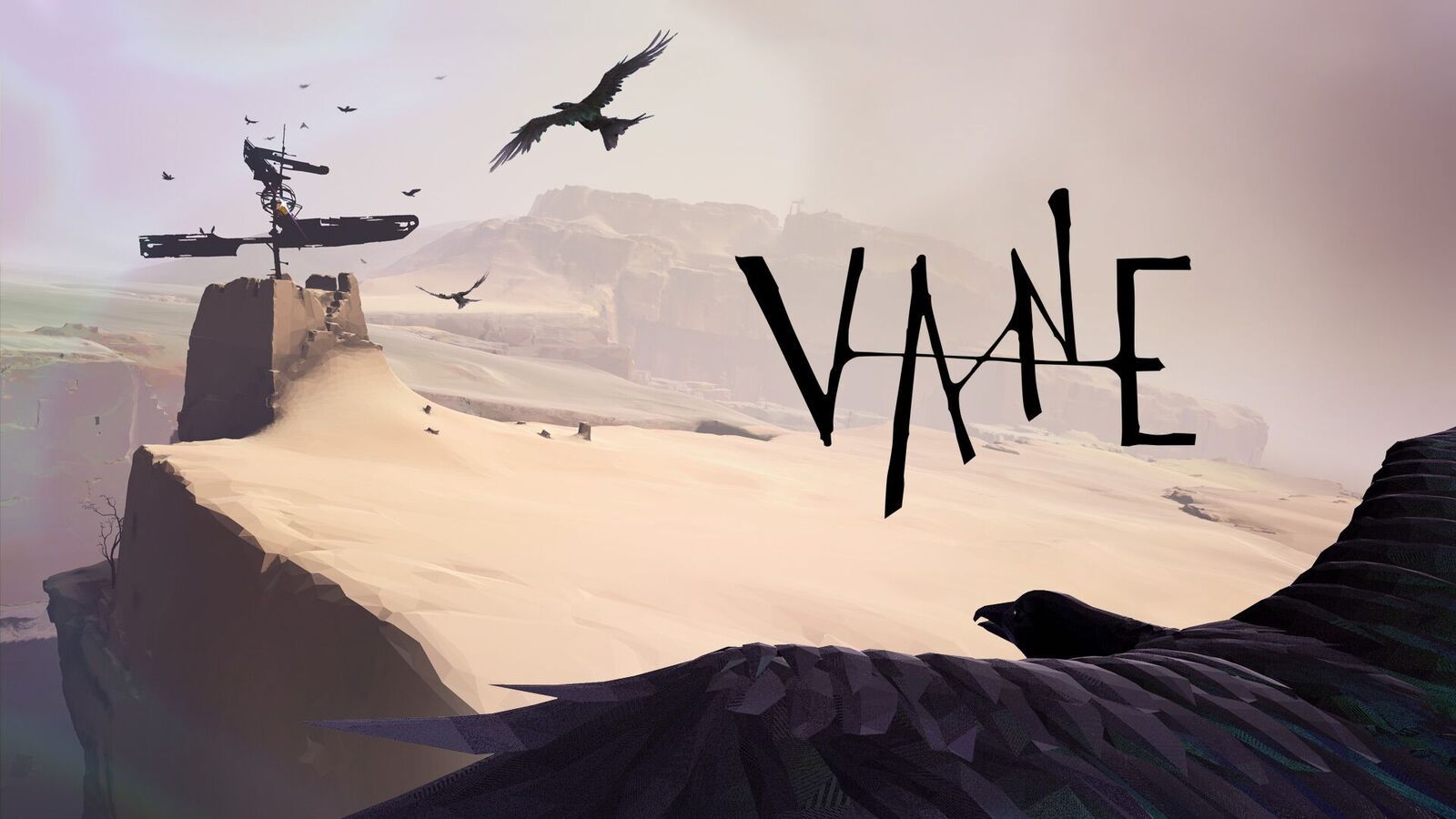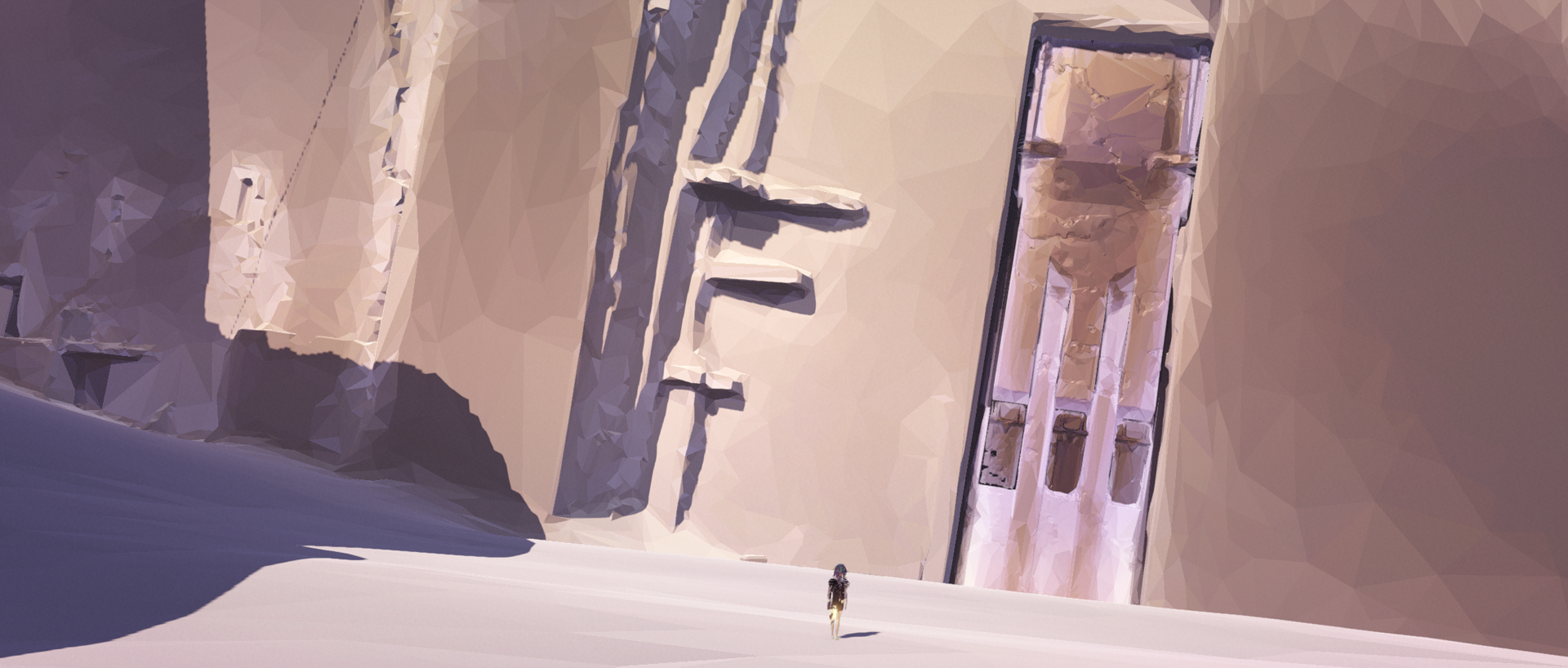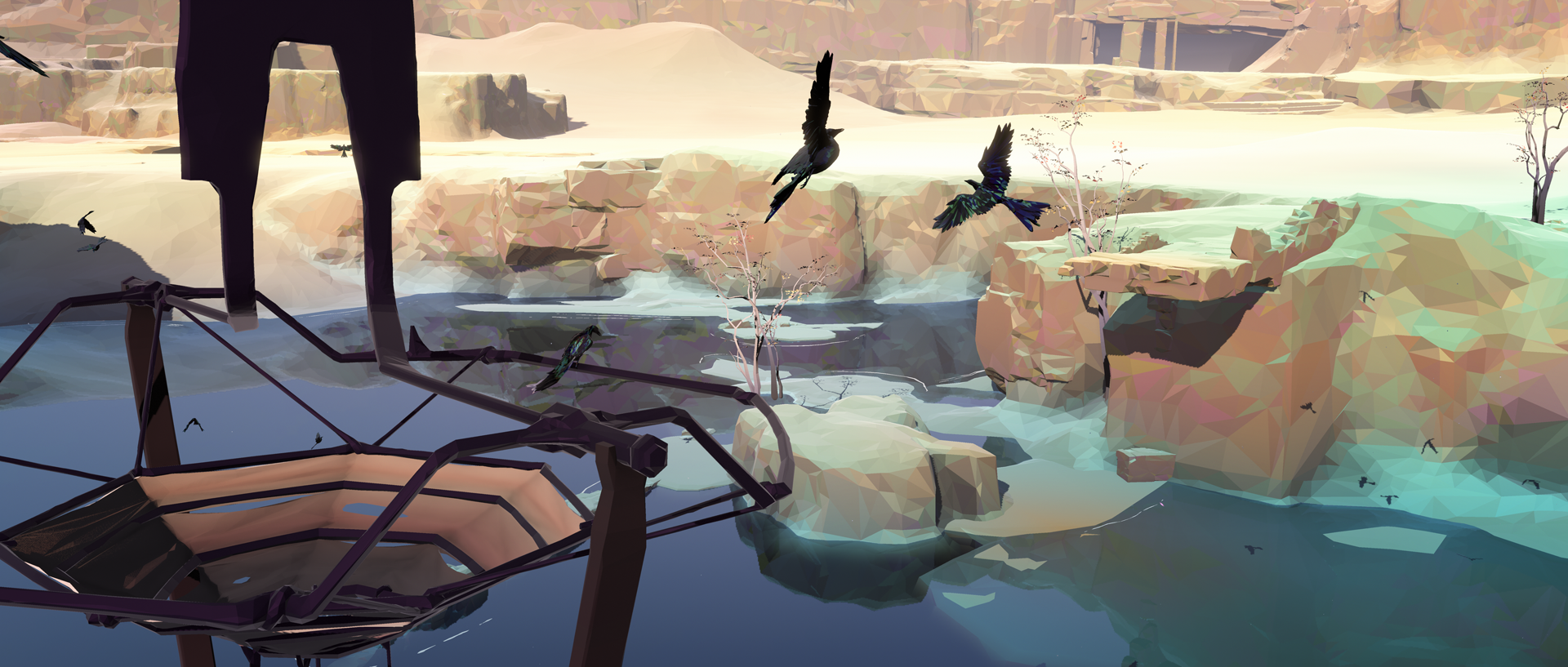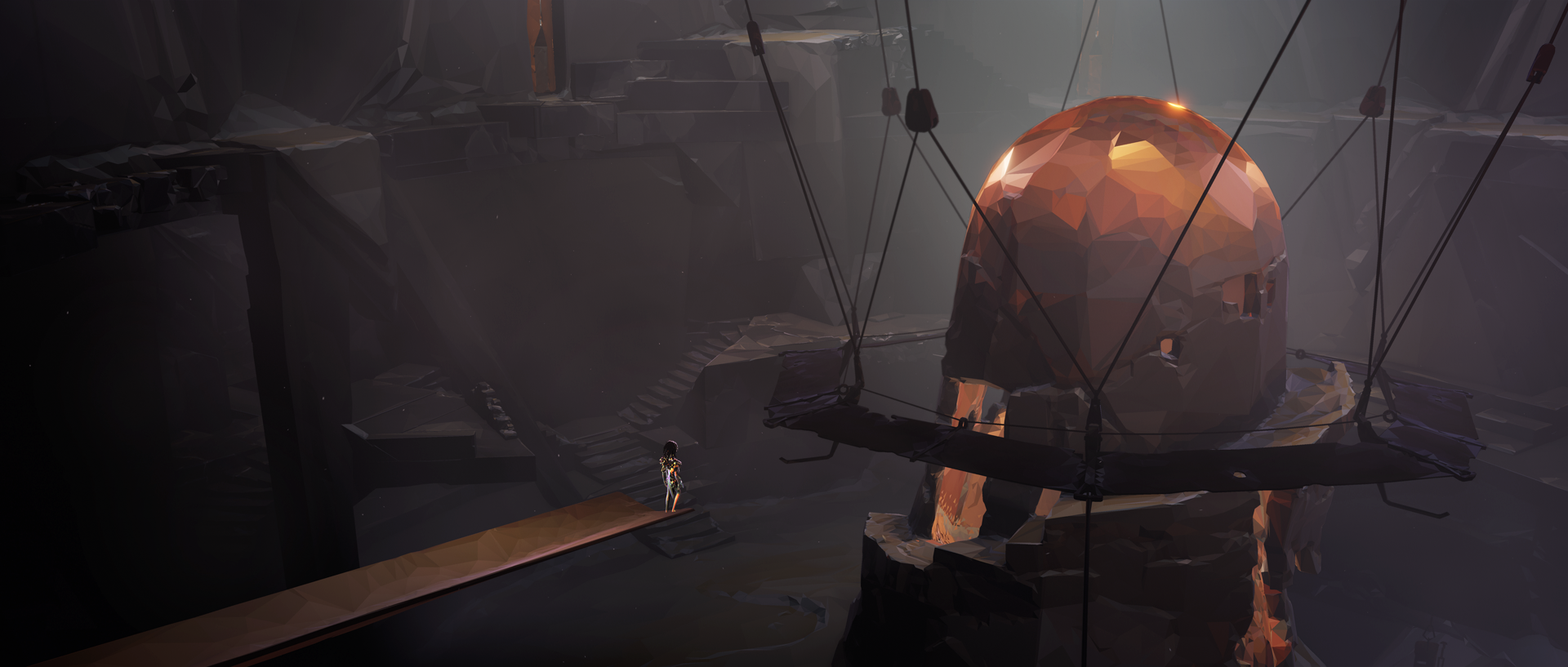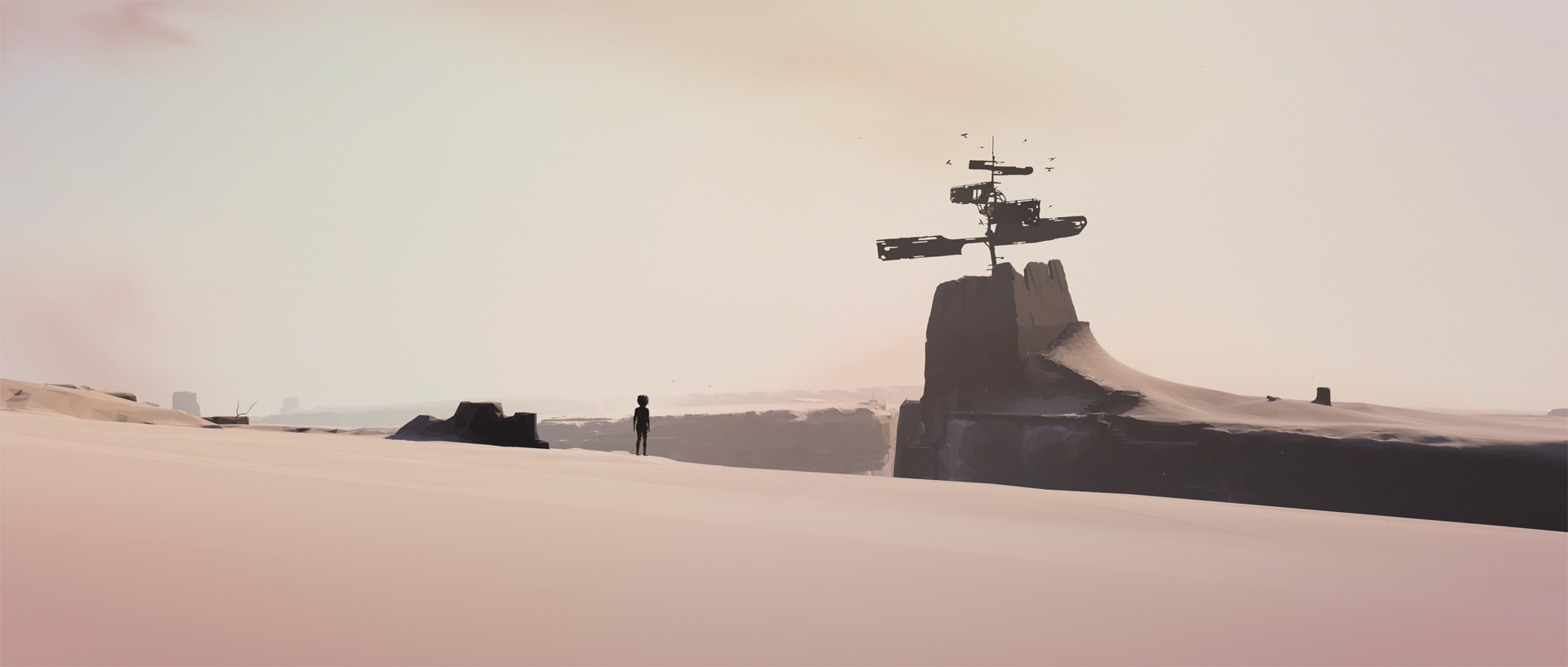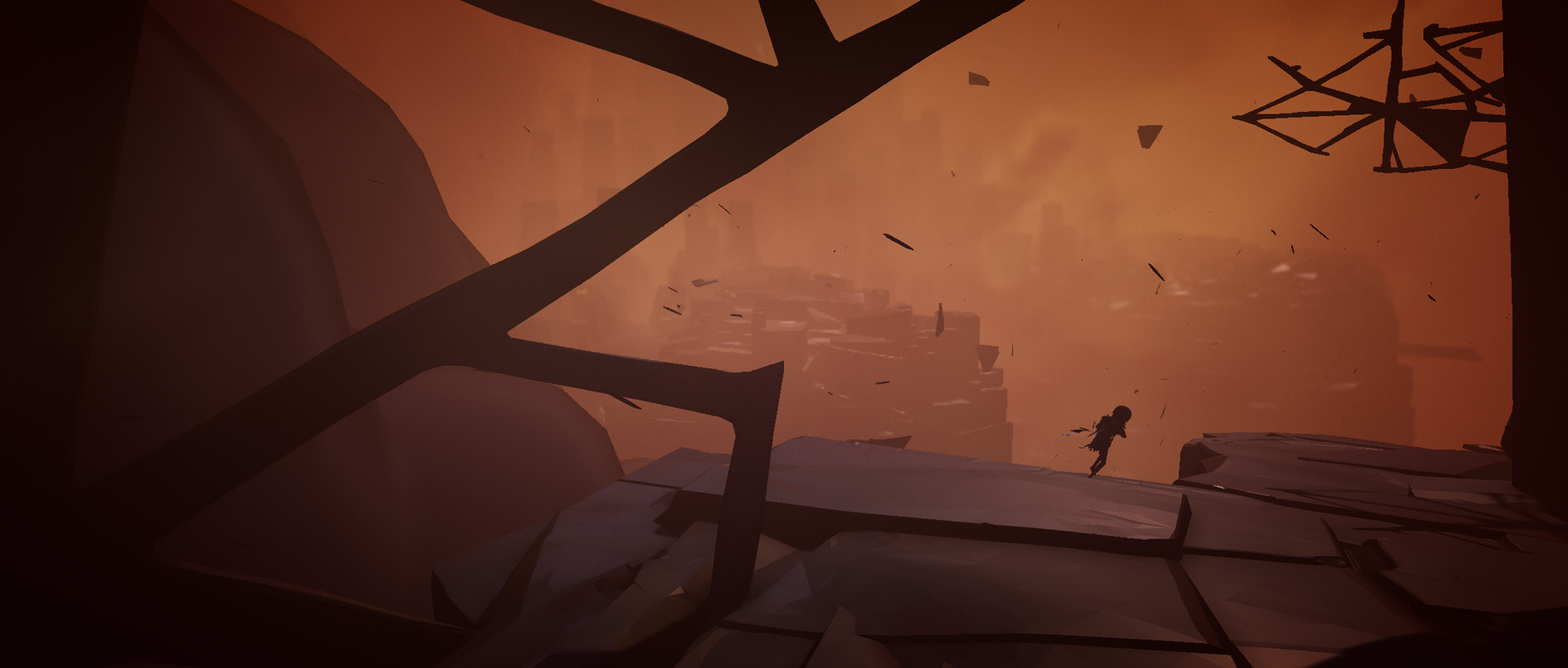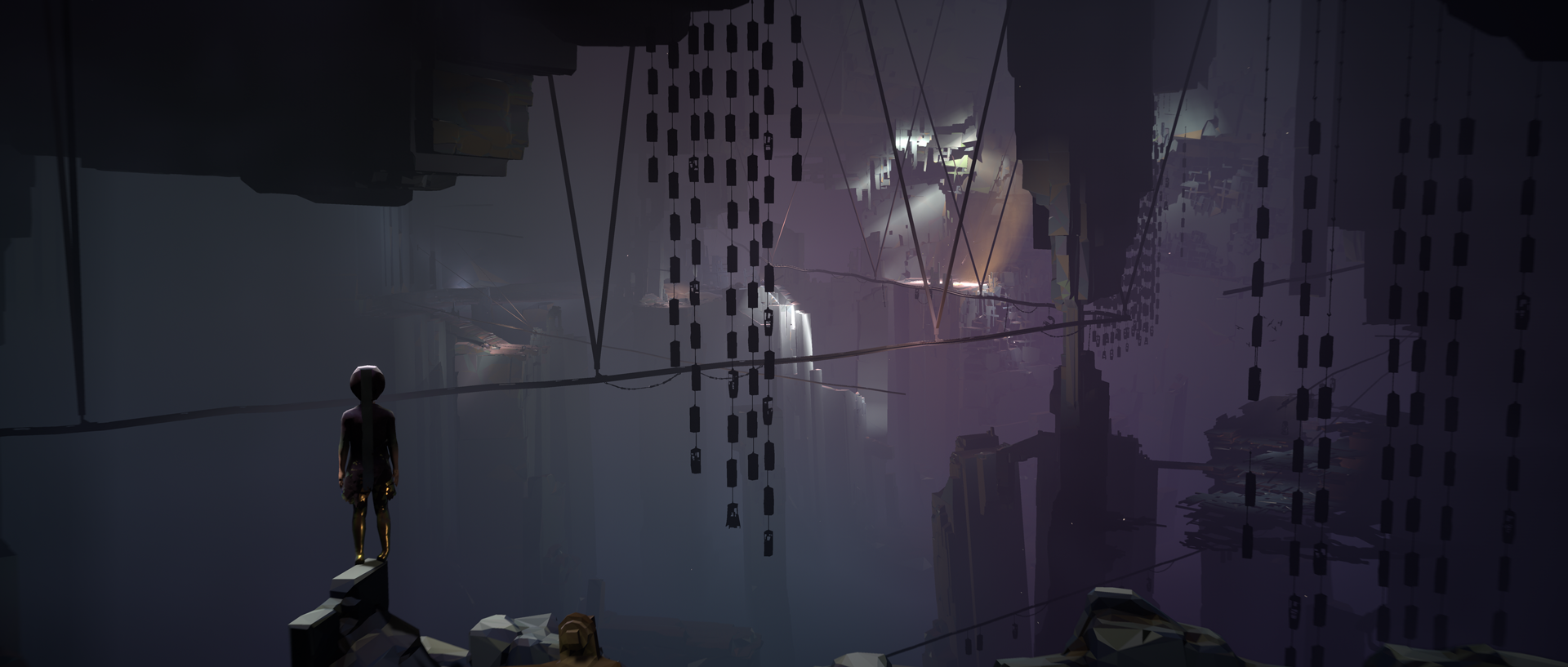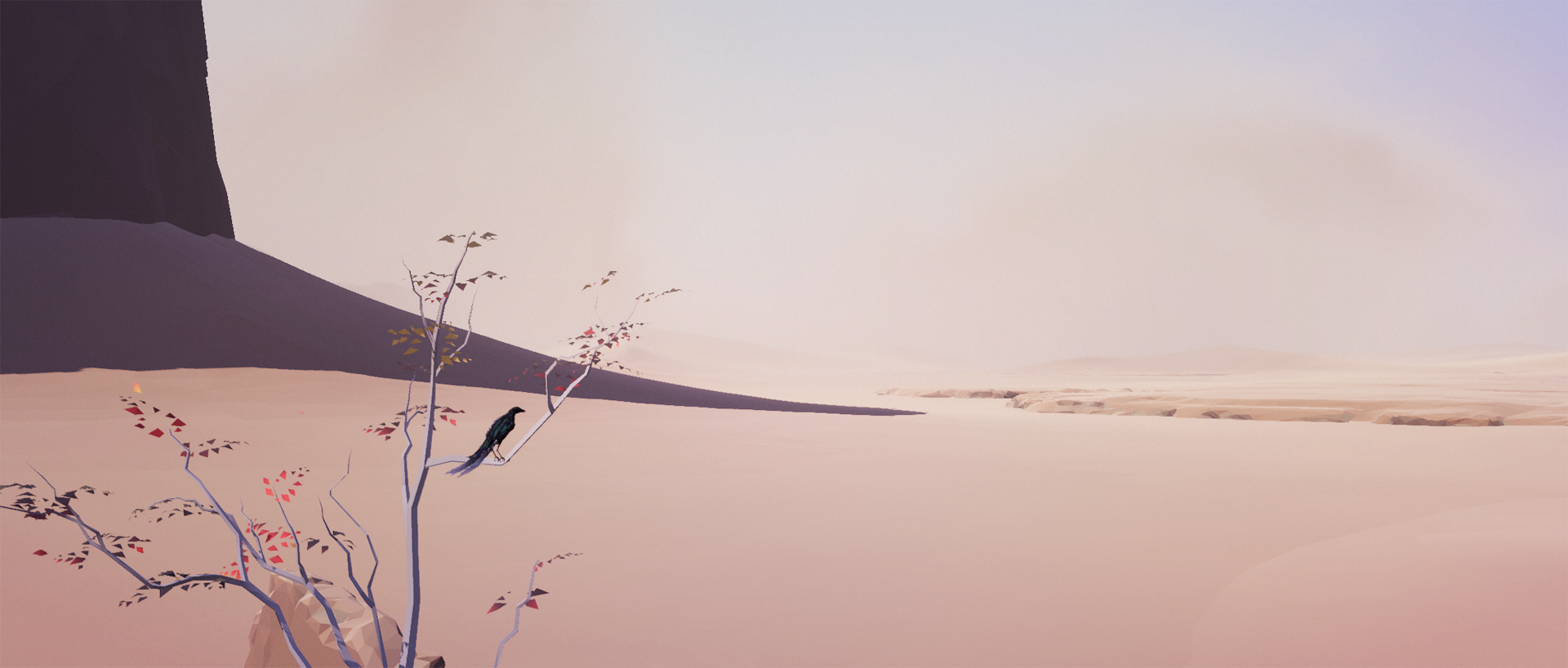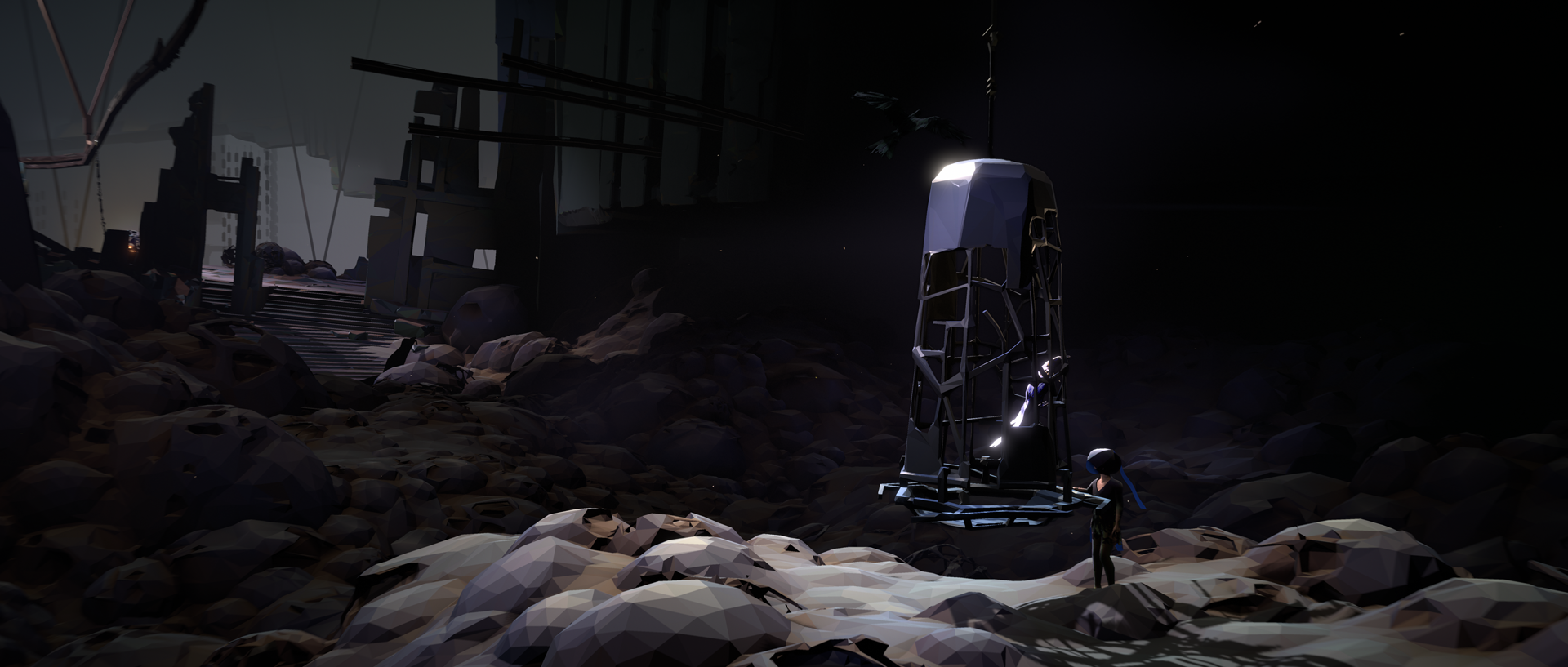Developer Friend & Foe, a small team made up of developers previously from Sony Studio Japan's Team Ico, Grin, and EA, is finally launching an experimental game called Vane exclusively for PS4. This comes after a lengthy development that lasted nearly five years and contained its fair share of ups and downs.
Still, the developer has been stalwart with their vision, delivering a game that Friend & Foe's Matt Smith wants to leave an "unsettled memory, but one that you’ll remember in a fond way," like films such as Mulholland Drive and Lost Highway. While much of the game's content and themes are still a mystery to most on launch day, I recently talked with Matt Smith to learn more about the interesting development of one of 2019's most intriguing games.
While Friend & Foe was initially billed as a team made up of former developers of The Last Guardian, this actually only applied to two developers on the team: Rasmus Deguchi and Rui Guerreiro. Other members of the team come from Europe, with one having worked on Killzone and the others at the now-defunct Grin on 2009's Bionic Commando reboot. Matt Smith previously worked at EA and Pop Cap.
As Matt puts it "[Friend & Foe] is this random creation of foreigners that happen to be in Tokyo in the game industry." That being said, this setup also allowed the team to contain a "diverse array of perspective and experiences" that were pivotal to its development. The Last Guardian comparisons didn't hurt though, as the comparisons allowed Vane to gain a lot of early traction at a time when The Last Guardian was still considered to be in development hell.
It was always the Friend & Foe's intention to work on their own games instead of opting to focus on sourcing or work-for-hire contracts like countless other studios. This means Friend & Foe could "take creative risks that would be hard to do under a larger team or a different company." Ultimately, Matt Smith thinks that the developer wants "to make games that we think aren’t being made but deserve to be made," and Vane was one such idea that gained traction.
According to Matt Smith, the idea for Vane spawned with "the idea of this desert mood; a bird that transformed into a child with this golden element, and some sinister characters." Early prototypes proved to Friend & Foe that this game and atmosphere had quite a bit of potential. One other thing that proved very important to Friend & Foe during development was player freedom:
"It was important to us that we didn't put any artificial limitations or blockers or anything like that between the player and the world. That’s the experience and the world we made here. That’s what the point of the game is about. It would've been counterproductive to try and limit where the player can go from a creative standpoint. That obviously opened up a number of technical challenges in terms of designing the spaces to withstand that type of gameplay."
Since the developer settled on focusing their efforts on Vane over other projects like a beat 'em up called Dangerous Men, the team has spent over four years fully realizing that initial vision. Even as development has progressed on Vane, Friend & Foe has relatively stayed the same size.
When development on Vane was at its fiercest, the team working on Vane grew to about eight but now, just as Vane launches, Friend & Foe only consists of four core developers with a couple other temporary contributors. Apparently, Matt Smith and Co. liked to keep the team as small as possible on Vane as the game's concept is somewhat hard to communicate and would only cause more problems.
"We never really wanted to grow our team too big. We always knew this was a hard concept to communicate even amongst ourselves," said Matt Smith, "We've had our fair share of disagreements and challenges around just how hard this concept was to talk about and make concrete. Going into a larger team, especially for a game like this, wasn't really what we wanted to do." Still, the team has managed to stay together and finally release Vane, even with a couple of roadblocks along the way that I'll get into later.
As I briefly mentioned before, Vane initially gained a lot of traction after being revealed at TGS 2014 during a time where Sony Studio Japan's Team Ico was quite quiet regarding that status of The Last Guardian. While The Last Guardian would ultimately be re-revealed and released between Vane's announcement and release today, the context of the situation it was announced in helped ensure that Vane captured one of those "lightning in a bottle" moments necessary for most indie developers to get their game noticed nowadays.
[pullquote]"The nice thing about seeing a really positive response to something you've done is that it convinces you that you’re doing something that’s right."[/pullquote]
While Matt Smith actually joined the Friend & Foe team shortly after the TGS 2014 reveal, he could vouch for the fact that the "response online was unexpected" for the team. "Some people on NeoGAF found some GIFs on our website and at the time," he said. "The Last Guardian wasn't out so there was a lot of built up anticipation for that product and I think some of that may have split over onto our project."
Thankfully, the team took this newfound popularity in stride, which motivated them to reach new heights with the game. Matt Smith commented that "the nice thing about seeing a really positive response to something you've done is that it convinces you that you’re doing something that’s right, on the right track," so it's evident that the fan response, though initially formed via miscommunication about who exactly was making the game, had a very positive impact on Friend & Foe.
Matt Smith came on board around the time Rui Guerreiro was leaving the project, and the game started to gain traction after TGS 2014. Matt believes the core concept of the game has stayed the same since he's come on, though Friend & Foe has taken Vane in some interesting directions since then. Without Rui Guerreiro, the man who spearheaded the project, the rest of the development team had to "take ownership of the game" and that in the end "the things that we emphasized may not have been emphasized otherwise."
Game development is a collaborative process with a constant ebb and flow to it, so it's fairly custom of games to change in a few ways depending on the creative in charge. Still, Friend & Foe is adamant about the fact that the core of Vane has "the atmosphere and mood that were in the initial demos and all these early milestones that we hit...is still there."
As for what people can expect, Matt said that the earlier parts of the game are entirely in line with what the developers have previously shown, but that "towards the end of the game [Vane] goes to some weirder places." While Friend & Foe always conceptualized Vane's ending to be like it is now, Matt revealed that they still " didn’t know then how it was going to come together" exactly back when the game was revealed in 2014. "At least from my perspective, it came together pretty well," Matt told me, relieved.
Even though Friend & Foe is happy with how Vane turned out, Matt Smith was still able to point out several struggles the team ran into to me. Outside of the previously touched on team shake-up, the developers did have a bit of trouble "lining up a partner" for Vane and also had to deal with coming close to running out of money a few times during development. Matt attributes the partner problem despite interest to this being the developer's "first time through this whole process" and the budgetary challenges to "when [Friend & Foe] had to pull together a major demo or milestone."
Pitching Vane to potential partners was also hard sometimes as the game can be quite hard to describe. Obviously, Friend & Foe has managed to spin this positively in marketing as there is an air of mystery about the secrets and surprising story elements contained within Vane while also making sure spoilers don't get out and ruin the experience. That being said, it could sometime be hard to convince partners that Vane was much more than what meets the eye. As Matt Smith pointed out to me:
"You can have a really great looking demo with a great atmosphere like we had at the beginning and in order to proceed a lot of potential partners that could fund your game will say ‘this looks really great and we really like what you’re doing here, but what’s the gameplay? What are you actually going to do in the game? Do you have a plan for it?’
You have to be able to say ‘yeah there’s more to this game than what you see’ even though as a creative and a developer a lot of that stuff is very far from concrete but you have to speak to it like it is concrete. You have to have confidence that what you’ll be able to do in the time you said you were going to do it is good enough."
As with most games, content also had to be cut during development. When it comes to full areas of the game, Matt recalled having to cut two areas the team loved - the Sunken City as well as a section that takes place in the underworld. Every time they presented the game too, the developers over at Friend & Foe would have their "illusions about how people would play the game shattered." Players initially had trouble getting the hang of Vane's controls, so the developers took the time to make the game and its environment took players along the right path without too much obtuse interference.
Outside of that, there were actually entire proposed game mechanics that didn't make the cut in Vane. Apparently, early on there was an idea that sound being a transmitter would be a significant part of Vane. Matt Smith explained that there was a room within an early GDC demo that "revolved around this big golden bell that would ring and the sound waves would then pass down these hallways and you could walk down those hallways as a child instead of having to be a bird."
[pullquote]"There’s too much to list, it’s painful thinking about it."[/pullquote]
This would then allow players to explore that area more intimately and possibly gain access to doors and items that they would be able to get to otherwise. Unfortunately, the team couldn't find a consistently solid way to implement the mechanic outside of that one room, so that idea was scrapped. In the final game, most of these properties were given to the golden dust that players encounter along their adventure.
Friend & Foe was also interested in creating puzzles that revolved around reflecting light, but according to Matt, it was tough to determine where precisely the reflected light is going when playing on a screen. If the team prototyped a mechanic and it didn't work out they usually made the description to scrap it and move on. While this was probably for the best, Matt still couldn't help but remark "There’s too much to list, it’s painful thinking about it."
Sadly, the developers at Friend & Foe were also subject to their fair share of crunch during development. Many games, especially ones created by smaller teams, depend on an excruciating amount of hours being too into them. While passion did drive Friend & Foe through these rough segments of development, Matt Smith did honestly admit that "Partly it’s bad planning. I can’t lie about that."
He then went on to explain to me how he hasn't spent as much time with his newly-born child as he would due to the number of hours he has put into Vane's development and how it's a result of the team being small and made up of developers that all have a stake in the company. He made it clear that Friend & Foe doesn't consider it a requirement, but that it's also hard to stop someone from working on a project they are passionate about:
"One thing that’s important to note is that everyone working on the game right now is basically an owner of [Friend & Foe]. We all kind of own the company together. We do work a lot, we work way to much. I don’t think it’s healthy. I just had a son, he was just born, but I had to spend a lot of time at the office just trying to pull the game together and submitting stuff and there was just a lot of stuff to do.
He was born more or less right when we were trying to ship the game, so I really didn’t get to spend the kind of time I would’ve liked to at home getting to know him. But on the other hand this is the company that I founded with these guys and whether or not this game succeeds or fails is more or less the future of the company. If I want to be able to continue to work for myself on my own terms, this company has to succeed and put everything we have into this game.
We’ve also tried to make it clear to anyone we hire that crunch isn’t expected of them and that we don’t encourage it but then on the other hand everyone else is here working really late and really hard. The studio is full of passionate people and it’s pretty hard to discourage someone from catching the bug and working on the stuff they love to do.
We’ve definitely seen our share of crunch...We’re all wearing a bunch of different hats and trying to build a structure for this side of the company. It can be challenging at times. In an ironic way you’d think it’d be easier to organize less people within a company, but sometimes it’s harder."
The game's development wasn't all negative though. As I've mentioned, Friend & Foe was elated by the response the game has received every time it is shown from a presentational and atmospheric standpoint, and Matt is even happy about a few aspects of Vane that were realized fully despite opposition. In this case, he refers to both the game's ending and, curiously, a ball pushing mechanic that can briefly be seen in the game's latest trailer.
Matt Smith coyly describes the ending as a "weird little thing we wanted to do" and while he didn't go into any spoilers, he said that "the fact we were able to get the ending the way we wanted to in the game and that the game supports it, I’m pretty happy about it." He also revealed that ball-pushing had been in Vane from an early stage but that it was something "we all thought we’d have to cut" outside of a couple of dedicated team members. Surprisingly, they were able to design it properly and implement ball-pushing into the final game in something that Matt Smith describes as "a really strange sequence and pretty compelling
Finally, after years of work, the game was starting to shape up in Summer 2018. When it came to a release date, the team had previously promised a 2017 launch in their PSX 2016 trailer. This was a window that Matt called "very optimistic" and stated that Friend & Foe decided to "put the release date in the back of our minds and focus on making that best game that we could" once they knew Vane wouldn't be releasing in 2017.
While this indefinite delay came with some logistical issues, the team was ultimately able to work through it. Towards the middle of last year, Friend & Foe once again decided to put release date discussion back on the table. Even though Vane was shaping up well, the studio knew that they wouldn't be able to get it out before a fall full of heavy hitters like Red Dead Redemption 2. Matt pointed out that "there is a lot of conventional wisdom as an indie developer that you should target and release your game in less populated stretches of the calendar so that you are not fighting for air time." This eventually caused Friend & Foe to start looking at early 2019 release dates.
While we now know that early 2019 is surprisingly an exciting and busy time for game releases, Vane is getting out ahead of the rush late January and February bring by releasing today. This release date was revealed back during the Kinda Funny Showcase in December 2018. Matt revealed to DualShockers that Friend & Foe was already planning to announce the release date and start promoting the game more in December and that the showcase just "lined up perfectly with that."
[pullquote]"We’re obsessive craftsman here, so we are still working on the game even though it’s supposed to be done"[/pullquote]
He went on to compliment the Kinda Funny crew, calling them "great to work with" and stating that they "put together a really put together an eclectic and interesting group of games there that we were honored to be a part of." When I talked to Matt Smith, Vane's launch was still approaching. While the studio was quite excited and happy, Matt made it clear that Friend & Foe was working on Vane up until the last minute before launch.
"We’re obsessive craftsman here, so we are still working on the game even though it’s supposed to be done," he said. " We’re continuing to patch out certain things, improving performance in certain areas we weren't able to get to before our submission. Luckily, since it’s a PSN downloadable game, patching it is not going to be a huge issue." While Matt claims that different members of the team have different expectations on how Vane is going to perform, he sees releasing the game to the masses as "the ultimate test."
As Vane launches today, Friend & Foe is looking at "what parts of the game people really like, what parts they don’t, and what the overall reception is." In the "immediate future" Matt thinks that Friend & Foe will be focusing on supporting Vane by improving performance in a couple of areas and working on other "updates that we’ll be putting into our queue."
Once the proverbial dust has settled, Friend & Foe will have to decide what to do next, and Matt Smith seems to think it could go multiple ways. He says the team will "take a look at where else we want to take [Vane]" after launch, though there are other ideas floating around the studio. One is a beat 'em up prototype called Dangerous Men, which has been on the back burner at Friend & Foe since the studio's inception and event has a page on their website.
Matt describes that game as "180 degrees different than Vane," but it is something they already have a working demo for and could turn into a full game with proper support and funding. That being said, Friend & Foe will also be creating prototypes for other projects, so they could end up making another game altogether.
Today marks the beginning of the end of Vane's lengthy development and hopefully the start of a new era for Friend & Foe. As I mentioned at the start, Friend & Foe's primary goal with Vane is to leave a memorable impact on the audience. Hopefully, after all the ups and downs seen throughout the game's development, Vane can accomplish just that.
You can expect DualShockers' full review of the game later this week. Vane is now available exclusively for PS4.

